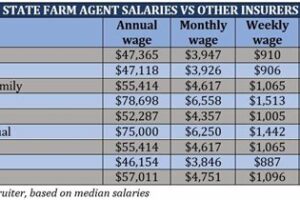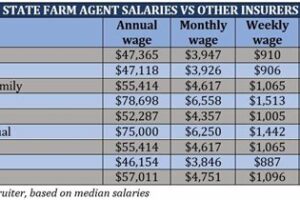Table of Contents
Discover the number of farms in Kansas with our latest research. Get accurate data on farming and agriculture in the state.
Did you know that Kansas is known as the breadbasket of the world? This agricultural state has a rich history of farming that dates back to the late 1800s. With its fertile soil and favorable climate, it’s no wonder that farming is the backbone of the state’s economy. But just how many farms are there in Kansas? To answer that question, we must first look at the state’s land area, which covers over 82,000 square miles. Within this vast expanse of land, there are approximately 60,000 farms, making Kansas one of the top states in the nation when it comes to farming.
Have you ever wondered how many farms are in the state of Kansas? Well, wonder no more! Kansas is known for being an agricultural state, and farming is a vital part of its economy. In this article, we will explore the number of farms in Kansas and some interesting facts about them.
The Number of Farms in Kansas
According to the United States Department of Agriculture (USDA), there were 59,600 farms in Kansas as of 2020. This number has remained relatively stable over the past few years. Kansas ranks seventh in the nation in terms of the number of farms and fifth in terms of total farmland.
Types of Farms in Kansas
Kansas is known for producing a variety of crops and livestock. The most common type of farm in Kansas is a grain farm, followed by beef cattle and dairy farms. Other popular crops include wheat, corn, soybeans, and sorghum. Kansas also has a significant number of hog and poultry farms.
Agricultural Production in Kansas
Kansas is a leading producer of several agricultural products. It is the top wheat-producing state in the nation, and it also ranks highly in the production of sorghum, corn, and soybeans. Additionally, it is the second-largest beef-producing state in the country.
Farm Size in Kansas
The average farm size in Kansas is 747 acres, which is larger than the national average of 444 acres. However, there is a wide range of farm sizes in Kansas, with many small family farms as well as large corporate farms.
The Importance of Farming in Kansas
Farming is a vital part of Kansas’s economy, contributing over $62 billion annually. It is also a significant source of employment, with approximately 12% of the state’s workforce employed in agriculture-related jobs.
The Future of Farming in Kansas
The future of farming in Kansas is bright, with many opportunities for growth and innovation. With advances in technology and increasing demand for sustainable and locally sourced food, there is a growing interest in small-scale and organic farming. Additionally, Kansas is well-positioned to benefit from global trade opportunities, as it is a major exporter of agricultural products.
The Challenges Facing Kansas Farmers
Despite the many opportunities for growth, Kansas farmers face several challenges. One of the biggest challenges is climate variability, which can lead to droughts, floods, and other extreme weather events. Additionally, farmers must navigate complex regulations and market conditions, and many struggle to access affordable healthcare and other resources.
The Role of Government in Supporting Kansas Farmers
The government plays an important role in supporting Kansas farmers. Programs such as crop insurance, conservation programs, and disaster assistance help farmers manage risk and recover from losses. Additionally, the government provides funding for research and development to advance agricultural practices and improve productivity.
The Importance of Supporting Local Farmers
Supporting local farmers is not only good for the economy but also for our health and the environment. Locally sourced food is often fresher and more nutritious than food that has been transported long distances. Additionally, buying from local farmers supports sustainable farming practices and helps preserve open space and wildlife habitat.
Conclusion
In conclusion, Kansas has a significant number of farms that produce a wide variety of crops and livestock. Farming is a vital part of the state’s economy and workforce, and there are many opportunities for growth and innovation in the industry. However, farmers also face several challenges, and it is important to support them by buying locally sourced food and advocating for policies that support sustainable agriculture.
Located in the heart of America, Kansas is a state with a rich farming heritage. Known as the Breadbasket of America, it is home to a diverse range of crops and a thriving livestock industry. With over 46,000 farms spread across its vast expanse, Kansas is truly the heart of agriculture in the United States.
Kansas is the first in wheat production and is known as the Corn Capital of the World. The state boasts a long history of agricultural innovation and has contributed significantly to the growth and development of modern farming practices. From hybrid crops to precision agriculture, Kansas has been at the forefront of agricultural research and development.
The importance of family farms cannot be overstated in Kansas. These farms are the backbone of the state’s agricultural industry, providing food and other agricultural products to consumers across the country. With approximately 98% of all farms in Kansas being family-owned and operated, these farms play a vital role in sustaining the state’s economy and way of life.
Kansas is home to a diverse range of crops, including wheat, corn, soybeans, sorghum, sunflowers, and cotton. The state’s fertile soil and favorable climate make it an ideal location for growing a variety of crops. Additionally, the state’s thriving livestock industry includes cattle, hogs, sheep, and poultry.
Despite its large agricultural output, Kansas is also a hub for agricultural innovation. The state is home to numerous research institutions and universities that specialize in agricultural research and development. These institutions work closely with farmers and other stakeholders to develop new technologies and practices that can increase yields, reduce waste, and improve the overall efficiency of the agricultural system.
Kansas’ farms play a crucial role in feeding the nation. The state’s agricultural products are shipped across the country, providing food and other agricultural products to millions of people. The state’s location in the center of the country also makes it an ideal distribution hub for agricultural products, facilitating the transportation of goods to other parts of the country.
In conclusion, Kansas is a state with a rich farming heritage and a vital role in American agriculture. With its abundant natural resources, thriving livestock industry, and innovative spirit, the state is poised to continue leading the way in agricultural research and development. As one of the most productive agricultural regions in the world, Kansas’ farms are central to the nation’s food security and economic prosperity.
Once upon a time, there was a curious individual who wondered about the number of farms in the state of Kansas. They set out on a quest to uncover the truth and learn more about the agricultural landscape in this Midwestern state.
As they traveled through Kansas, they discovered that farming was a way of life for many people in the state. From vast fields of wheat to sprawling pastures of cattle, the land was teeming with agricultural activity. But just how many farms were there in the state?
- The first source they consulted was the United States Department of Agriculture (USDA), which reported that there were 58,900 farms in Kansas as of 2020.
- Next, they turned to the Kansas Department of Agriculture, which provided a slightly different figure. According to their data, there were 59,600 farms in the state as of 2019.
- Curious about how these numbers compared to other states, they consulted the USDA’s National Agricultural Statistics Service. They learned that Kansas was ranked 7th in the nation for the number of farms, behind states like Texas and Iowa.
- But the curious individual didn’t stop there. They wanted to know more about the types of farms in Kansas. They discovered that the majority of farms in the state were family-owned and operated, with an average size of 753 acres.
- They also learned that the top agricultural products in Kansas were beef cattle and calves, followed by wheat, corn, and soybeans.
With all of this information in hand, the curious individual had gained a better understanding of the agricultural landscape in the state of Kansas. They marveled at the hardworking farmers who tended to the land and helped feed the nation.
As they traveled back home, they felt grateful for the opportunity to learn more about this fascinating industry and the people who make it all possible.
As you reach the end of our blog post, we hope that we have been able to provide you with insightful information about the number of farms in the state of Kansas. We know that it can be easy to overlook the significance of agriculture in our everyday lives, but the truth is that it remains a crucial component of our economy, providing jobs and resources for millions of people across the country.
It’s fascinating to learn that Kansas is one of the top agricultural states in the US, with over 60,000 farms spread across its vast landscape. These farms range from small family-owned operations to large-scale commercial enterprises that produce a wide range of crops, livestock, and other agricultural products that are essential to our daily lives.
We’ve also learned that farming in Kansas is no easy feat, as farmers have to contend with unpredictable weather patterns, pests, and other challenges that can impact their yield and profitability. Nonetheless, the resilience and ingenuity of Kansas farmers have helped them overcome these obstacles and continue to make a significant contribution to the state’s economy and the nation as a whole.
In conclusion, we hope that this blog post has helped you gain a deeper appreciation for the role that agriculture plays in our lives. Whether you’re a farmer yourself or simply someone who enjoys fresh produce from your local grocery store, we all benefit from the hard work and dedication of those who work in the agricultural industry. Let’s continue to support and celebrate our farmers, and the vital role they play in our communities.
.
Many people often wonder about the number of farms in the state of Kansas. Here are some of the common questions that people ask about it:
- How many farms are in the state of Kansas?
- What is the average size of a farm in Kansas?
- What types of crops are grown in Kansas?
- How has the number of farms in Kansas changed over time?
The answer to the first question is that as of 2020, there were approximately 58,300 farms in the state of Kansas. This number may vary slightly from year to year, as some farms may go out of business or new ones may start up.
When it comes to the average size of a farm in Kansas, that number is around 746 acres. Again, this may vary depending on the type of farming operation and other factors.
As for the types of crops that are grown in the state, there is a wide range of options. Some of the most common include wheat, corn, soybeans, sorghum, and sunflowers. Livestock is also an important part of the agricultural industry in Kansas, with cattle and hogs being among the top products.
Finally, when it comes to changes in the number of farms over time, there has been a steady decline in recent decades. In 1982, for example, there were over 100,000 farms in Kansas. However, this number has decreased by about 42% since then. This can be attributed to a variety of factors, including consolidation of operations and changing economic conditions.
In conclusion, while the number of farms in Kansas has decreased over time, agriculture remains a vital part of the state’s economy. With a wide range of crops and livestock being produced, there is no doubt that this industry will continue to play an important role in the years to come.






